Why You Have Chronic Sinus Congestion and How To Get Fast Relief

When your stuffy nose and cough last longer than a few weeks, you may have more than a simple cold.
Unlike a cold, sinusitis lasts longer, has more symptoms, and may not respond to over-the-counter medications. This inflammation of the sinuses can lead to congestion, cough, headaches, and pain.
If you’re experiencing these sinusitis symptoms, you’re not alone, as sinus disease affects 31 million people in the United States.1
Inflammation of the sinuses can last as little as 3 weeks, or for months to years in chronic cases. If you’re one of the people who suffer from chronic sinusitis, you know how frustrating and debilitating the inflammation, pain, and congestion can be.
Let’s take a look at the triggers and root causes of sinusitis, as well as some natural treatments that may relieve your uncomfortable symptoms and have you breathing freely again.

What Exactly is Sinusitis?
Sinusitis is an inflammation of the paranasal sinuses. Your paranasal sinuses are a connected system made up of four pairs of cavities, or hollow air spaces, within the bones surrounding your nose.
A thin layer of mucus lines the sinuses to trap dust, germs, and allergens. Normally, small hair-like projections in the sinuses, called cilia, funnel the mucus and trapped particles towards the back of the throat and down to the stomach. When sinusitis occurs, swollen and inflamed nasal tissues prevent this natural protective process.
Sinusitis can be a result of bacterial, viral, or fungal infection, allergies, and even the physical structure of your nose. While most people experience only acute (short-term) sinusitis, others may suffer from chronic sinusitis lasting for months or even years.
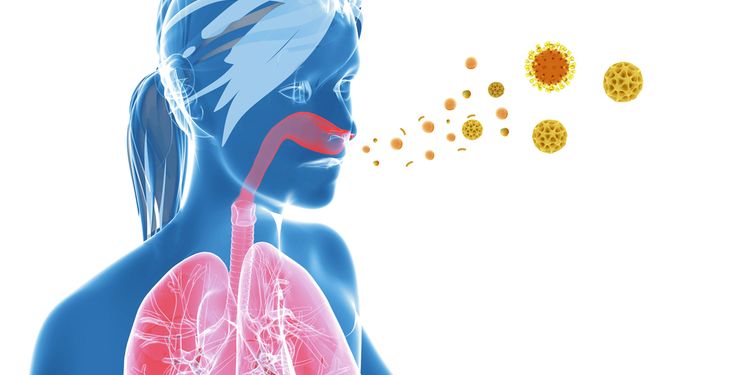
How Does Sinusitis Occur?
Sinusitis occurs when your sinus nasal tissues become inflamed, most often due to bacterial or viral infection, fungi, or allergens. Sinus inflammation can prevent mucus from flowing out of the sinuses. When the sinuses get blocked, air and mucus can become trapped, leading to pain and thickened mucus due to loss of water.
Swollen membranes at the opening of the sinuses prevent air from entering, creating a vacuum effect that leads to pressure on the membranes and pain in the face. The inflammatory process results in extra mucus production, which compounds mucus thickening in the paranasal sinuses.
The inflammation that leads to sinusitis may occur as a result of:
- Infection: Bacterial or viral infections, such as a cold, can lead to nasal inflammation.
- Allergies: Hay fever, environmental allergies, and even food sensitivity/allergies can irritate and inflame nasal tissues.
- Fungi: Fungus is present in the air we breathe, and a healthy immune system is not bothered by it. When the immune system is weakened, fungi can become a potential allergen and lead to nasal inflammation.
- Physical Factors: Inflammation can occur in the sinuses when your nose is physically damaged or when nasal polyps (benign mucous growths) develop. Structural abnormalities such as a deviated septum or physically small sinus cavities may also predispose you to sinusitis.

Symptoms of Sinusitis
Sinusitis is often mistaken for the common cold or allergies due to the similar symptoms. Common sinusitis symptoms include stuffy nose, nasal discharge, postnasal drip, coughing, headache, fever, fatigue, weakness, and pain in the face, ears, jaw, and teeth. Less common sinusitis symptoms may include a decreased sense of smell, sore throat, cough that worsens at night, and bad breath.
The pain that accompanies sinusitis is often the most distressful part of this condition. Sinus pain can be located in the area of a specific sinus; however, pain is more common in acute cases of sinusitis, and may also be experienced in more than one location.
- Forehead Pain: Frontal sinuses are located over the eyes in the brow area.
- Eye Pain: Ethmoid sinuses are located between the eyes, behind the bridge of the nose. Inflamed ethmoid sinuses may lead to swelling of the eyelids and eye tissue, as well as tenderness at the side of the nose.
- Upper Jaw and Tooth Pain: Maxillary sinuses are located inside each cheekbone. Maxillary inflammation may lead to tender or swollen cheeks.
- Head Pain: Sphenoid sinuses are located behind the ethmoids in the upper region of the nose and eyes. Inflamed sphenoids may lead to earaches and a deep achiness at the top of your head.

Types of Sinusitis
There are four different types of sinusitis ranging from short-term to chronic infection. The types are defined by the duration of illness or recurrence of the symptoms.
- Acute Sinusitis: Lasting up to four weeks.
- Subacute Sinusitis: Lasting from four to twelve weeks.
- Chronic Sinusitis: Lasting beyond twelve weeks to months, or in some cases, years.
- Recurrent Sinusitis: Several attacks within one year.
Root Causes of Sinusitis
Sinusitis is triggered by inflammation of the paranasal sinuses. Inflammation is a natural immune response to protect the body from infection or to begin healing damaged cells. Sources of inflammation that might trigger sinusitis include allergies, asthma, and infection.

When the sinuses are inflamed, the naturally-occurring bacteria that would normally find their way out of the nasal passages thrive due to the thickened mucus and trapped air that creates the perfect environment for sinusitis-causing bacteria to grow. The inflammation, swelling, and mucus thickening of sinusitis are caused by a number of factors, each leading to a specific type of sinusitis.
The conditions that can cause sinusitis are typically:
Allergies: Chronic allergic conditions often lead to chronic or recurrent sinusitis
Upper Respiratory Dysbiosis:
- Infections: Bacterial and viral infections can lead to acute sinusitis.
- Bacterial Biofilm: Biofilm is a community of bacteria that may contribute to chronic sinusitis.
- Fungi: A weakened immune response to fungus can lead to both acute and chronic sinusitis.
Physical Nasal Structure: The nasal anatomy itself may lead to chronic sinusitis.
Pre-Existing Health Conditions: Weakened immune systems are more prone to allergies and inflammation, and certain hereditary conditions may lead to chronic sinusitis.

Root Cause of Sinusitis: Allergies
Allergies, hay fever, and other chronic conditions that affect the nose may lead to acute sinusitis. People who suffer from asthma and allergies regularly are more likely to experience chronic sinusitis when exposed to allergens that inflame the nasal tissues.
Hay fever, also known as allergic rhinitis, can be triggered by:
- Outdoor allergens such as mold, trees, grass, and weed and flower pollens.
- Allergens in the home such as pet dander, house dust mites, and indoor mold.
Allergies occur when the immune system has a response to a substance that would normally be regarded as harmless.16 An altered immune response triggers an attack, and antibodies are released that trigger inflammation. This inflammation leads to nasal congestion and mucus hypersecretion, which can become sinusitis when bacteria get trapped.
According to Dr. Mark Hyman, an impaired immune system and ability to balance inflammation is the root cause of all chronic illness, including common conditions like allergies.17
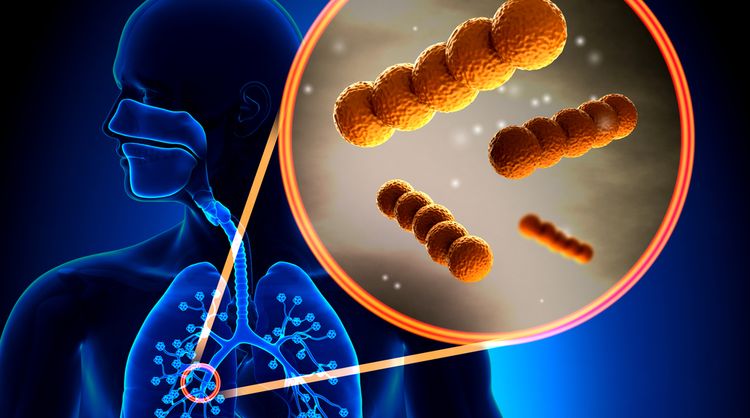
Root Cause of Sinusitis: Upper Respiratory Dysbiosis
Dysbiosis is a change to the normal composition of microorganisms on or inside the body.18 The microbial communities that live in your upper respiratory tract can be disrupted by bacterial, viral, or fungal pathogens.
Infections: Most cases of acute sinusitis begin with a common cold virus, which inflames the sinuses. When mucus is trapped behind the sinus opening and is unable to drain down into your nose, it can become a source of nutrients for bacteria like Streptococcus pneumoniae and Haemophilus influenzae. At least two-thirds of acute sinusitis cases are caused by these two bacteria when they opportunistically flourish.2
Most healthy people have no adverse reaction to the bacteria living in their noses and throats, and are even helped by them. When a cold causes you to sniff or blow your nose, the bacteria can be sent into the sinuses. If inflammation from the cold prevents mucus from draining the bacteria out of the sinuses, the bacteria can feed and multiply. When a cold or other viral infection leads to sinusitis, it is most often acute.

Bacterial Biofilms: Bacterial biofilms occur when bacteria organize into communities, rather than remaining single, independent (planktonic) cells. Chris Kresser, M.S., LAc believes that these bacterial communities may be the difference between acute and chronic sinusitis. “It’s probably more likely chronic, recalcitrant, difficult-to-treat sinus infections are more related to biofilm than fungus, and particularly in those who have had surgery and those who have poor immune function,” says Kresser.3
Biofilm has been associated with more severe symptoms and resistance to antibiotic treatment. In a recent study, bacterial biofilm was found in 59% of patients suffering from chronic sinusitis, and in none of ten control subjects. The symptoms of patients with bacterial biofilm, including coughing, the need to blow their nose, and postnasal drip, were significantly more severe than in patients without biofilm.4 Acute infections involving planktonic bacteria are often treated with antibiotics. However, once a biofilm has formed, the infection often becomes untreatable with traditional methods. The hallmark of chronic biofilm-based infections is extreme resistance to antibiotics and antimicrobial agents.5
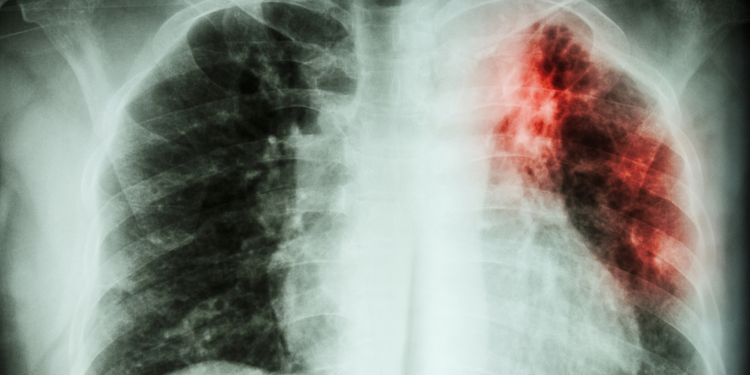
Fungi: Fungus is naturally present in the air we breathe, and a healthy immune system means most people will not have a reaction. In rare instances, however, fungus can lead to allergy and inflammation. There are 400 fungal species which are human pathogens. Aspergillus, Rhizopus, Rhizomucor, Absidia, Mucor, Bipolaris, and Candida are the most common of culprits for most types of fungal sinusitis.19
There are four types of fungal sinusitis:
Mycetoma Fungal Sinusitis: Typically located in the maxillary sinuses where a trauma or injury has occurred; this type of fungal sinusitis is characterized by a fungal “ball” that forms.
Allergic Fungal Sinusitis: An allergy to environmental fungi can lead to the inflammation that causes allergic fungal sinusitis, which usually occurs in people with compromised immune systems.
Chronic Indolent Sinusitis: An invasive disease that is generally found outside of the U.S. People with a decreased immune system are most at risk for this type of fungal infection.
Fulminant Sinusitis: This fungal sinusitis is generally only found when the immune system has been suppressed by a disorder or immunosuppressive agents. It can lead to progressive sinus destruction, bone infection, and can invade the eyeball.
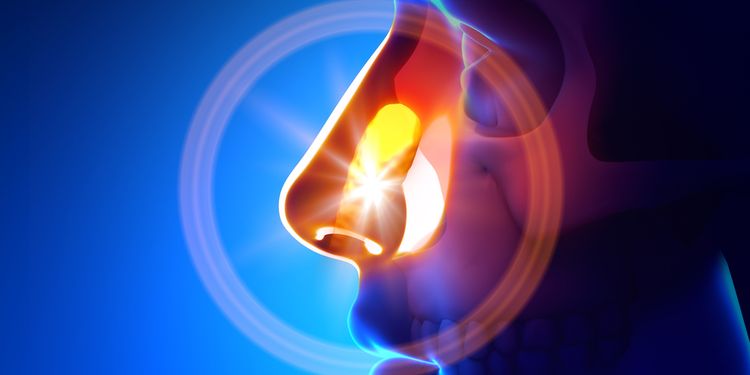
Root Cause of Sinusitis: Physical Structure
Some people are born with physical structures inside the nose that make mucus movement to the sinuses difficult, while others may experience structural problems after a nose injury. These people are at higher risk for developing chronic sinusitis.
The most common of these structural conditions are:
- Deformity of the bony partition between the two nasal passages, such as deviated septum
- Nasal polyps (benign nasal growths containing mucus)
- A narrowing of the sinus openings or small sinus structure
Structural issues in or near the sinus areas can lead to narrow or blocked sinus passages. This may prevent the normal flow of mucus in and out, and prevent the cilia from sweeping pathogens down the throat and to the stomach. When mucus and bacteria can’t freely exit the nasal passages, it can lead to the inflammation and thickened mucus that causes sinusitis.
Trauma from an injury or accident can also change the facial bone anatomy, increasing the likelihood of sinusitis.
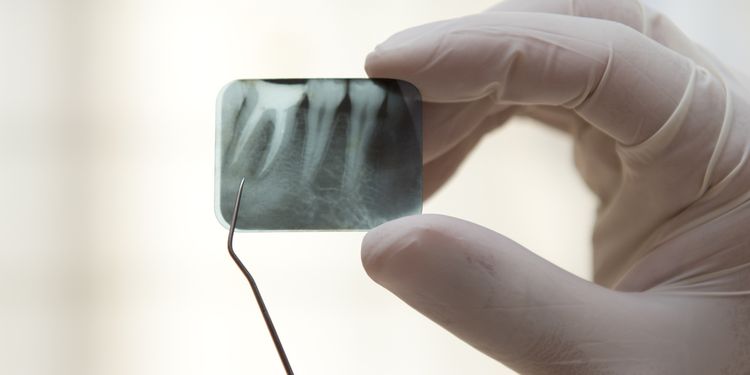
Root Cause of Sinusitis: Health Conditions
Certain health conditions can trigger the inflammation that results in sinusitis. When a disease or condition leads to sinusitis, it is most often chronic. Some of the more common conditions associated with sinusitis are:
Immune Deficiency Diseases: People with immune deficiency diseases may be more likely to suffer from sinusitis because their immune systems can’t fight off infections.
Cystic Fibrosis: Cystic fibrosis is a genetic condition in which thick and sticky mucus clogs the lungs, creating an environment in which bacteria is more likely to grow and allow chronic sinusitis to occur.
GPA: Granulomatosis with polyangiitis is an immune disease that results in necrotizing inflammation. Chronic sinusitis occurs in more than 60% of cases and is typically the first complaint for GPA patients.
Periodontitis: Periodontitis is a severe dental disease where the bones, gums, and tissues that support the teeth are destroyed by inflammation and bacterial infection. Close proximity of the sinus cavities to the teeth put periodontitis patients at risk of sinusitis as well.
Kartagener syndrome: Primary ciliary dyskinesia (Kartagener syndrome) is a rare hereditary disease where the cilia fail to properly move mucus up and out of the nose, mouth, and airways. When the cilia don’t move the mucus, infection can develop from the bacteria, fungi, or viruses within it.
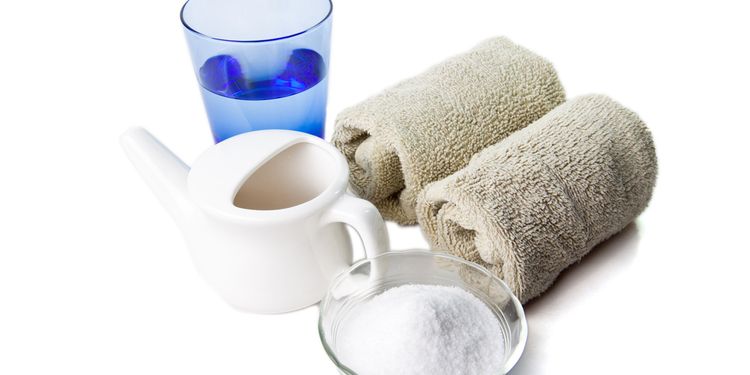
Natural Relief from Sinusitis
Natural remedies can provide relief from the pressure, headaches, pain, and congestion associated with sinusitis.
Nasal irrigation with a neti pot or saline rinses, air filtration, and specific supplements can support the immune system and decrease pain and mucus production during the healing process.
Sinus Rinsing/Neti Pot: The most commonly-utilized natural treatment for sinusitis is nasal irrigation, or rinsing of the sinuses.
Irrigating the nasal passages can loosen mucus, allow bacteria to exit, and may even effectively reduce biofilm. Numerous studies have shown the efficacy of nasal irrigation in relieving sinusitis symptoms. One meta-analysis looked at saline nasal irrigation and concluded that saline nasal irrigation is beneficial in relieving symptoms of chronic sinusitis when used as the sole treatment, as well as an adjunct treatment.6
Nasal irrigation can be used on children with sinusitis. A saline rinse typically consists of salt dissolved in filtered water. A 5% saline irrigation solution has been safely used in pediatric patients for up to seven weeks, and has been shown to significantly reduce antihistamine use and sinusitis symptoms.7 Baking soda, Himalayan salt, zinc, and colloidal silver are also commonly used in sinus rinsing solutions.13
Chris Kresser, M.S., LAc, also notes, “There are some pretty interesting emerging treatments for chronic sinusitis that relate to this biofilm hypothesis, and one of them is nasal irrigation with Johnson’s baby shampoo solution.” He admits this may be an unusual choice.3
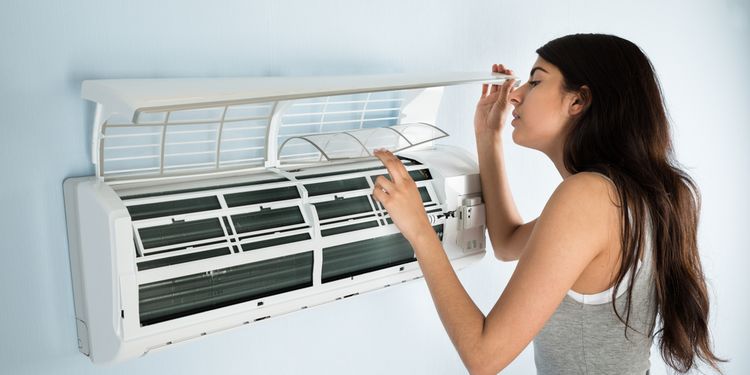
Air Filters: Robert Rountree, MD, has a simple suggestion for eliminating the potential allergens that can lead to sinus inflammation. Roundtree recommends an air filter/HEPA filter combination to eliminate dust, dirt, pollen, and pet dander that could trigger inflammation and sinusitis.
Xylitol: Chris Kresser also recommends xylitol nasal drops.3 Xylitol is a sugar alcohol that acts against biofilm. When used as a nasal spray or in nasal irrigation, it moistens and cleans the nasal passages. Additionally, xylitol mouthwash can be used to gargle with if a sore throat accompanies your sinus symptoms.
Quercetin: Quercetin is a flavonoid with anti-inflammatory and immune-boosting properties. It helps decrease mucus production and swelling by blocking the release of histamine from immune cells. Elizabeth Lipski, PhD, CCN recommends quercetin for chronic allergies, pain, inflammation, asthma, or sinusitis.8 “Quercetin is best known for its effectiveness in asthma, allergy, and as an antiviral agent,” says Lipski.
Stinging Nettle: Stinging nettle is a plant with biologically active compounds that reduce inflammation and histamine production. According to Andrew Weil, MD, “It has been used for centuries to treat sinus problems, allergies, and hay fever.” He states that he knows nothing more effective than nettle for allergy relief.

Vitamin C: Vitamin C may lower blood histamine levels. A 2004 trial found significantly lower blood levels of vitamin C in children with chronic sinusitis compared to a control group.11 In a clinical trial in which intranasal vitamin C was used to treat chronic sinusitis, 74% of the subjects showed a decrease in nasal secretions and blockage.
Iron: Iron plays an important role in immune health, and women are more susceptible to deficiencies than men. Ronald Hoffman, MD recommends iron to enhance immune defenses before bacterial infections occur.10 “I generally prefer dietary iron to high-dose iron supplements in conditions such as colitis, sinusitis, and cellulitis.”10 Animal protein and organ meat, oysters, pumpkin seeds, beans, lentils, and cooked spinach are good dietary iron sources.
Zinc: Zinc is an essential nutrient with antioxidant properties that is required for healthy immune function. In one study, children with chronic rhinosinusitis were found to have lower levels of zinc (and other antioxidants) than healthy control subjects.14 A deficiency in this mineral is linked with an increased risk of infections, including the common cold that can lead to sinusitis. Zinc not only helps prevent the common cold, but reduces the duration and symptoms among healthy adults.

NAC: N-acetyl cysteine is a derivative of the amino acid cysteine. NAC is an antioxidant that thins mucus and provides antiviral action. NAC has been known to increase the clearance of mucus and decrease mucus elasticity in chronic sinusitis patients.9
Lactoferrin: Lactoferrin is an iron-binding protein found in milk, tears, and nasal secretions that initiates enzymatic activity. Lactoferrin is produced and stored in nasal mucosa cells, where it acts as a first line of defense against pathogens. Lactoferrin has antibacterial, antiviral, antifungal, and immune-supportive properties. Low levels of lactoferrin have been found in people with sinus conditions and may play a role in the development of chronic sinusitis.14
Probiotics: Probiotics are beneficial bacteria that may help prevent common colds that can lead to sinusitis. These beneficial microorganisms may inhibit infections by supporting the immune system and resisting colonization of other pathogens. Lactobacilli bacterial strains have been found in clinical studies to reduce the risk of the common cold and strengthen the body’s immune defense.15
You’ve now got the tools you need to get yourself unblocked, from the inside out and without drugs. Try these methods out one by one and figure out which ones move the needle the fastest and most effectively for you.
